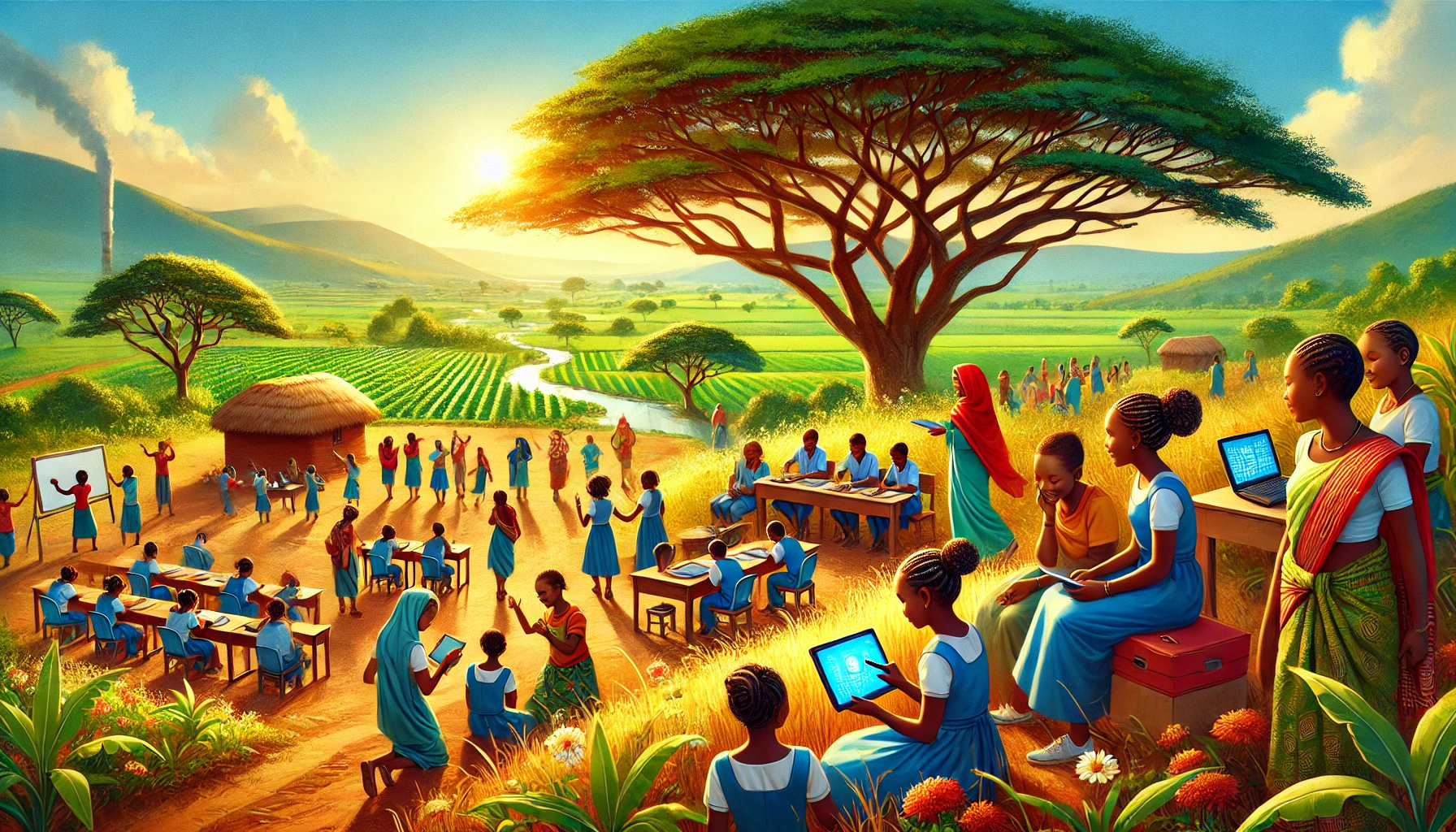Unlocking Africa’s Future: Empowering Adolescent Girls for Economic Transformation
The report emphasizes the importance of investing in adolescent girls in Africa to unlock significant economic potential, addressing challenges like child marriage, limited education, and economic opportunities. It calls for urgent, tailored interventions to empower girls, projecting a tenfold return on such investments.

A study by the World Bank, the Population Council, and the Center for Global Development, highlights the immense potential that investing in adolescent girls in Africa holds for the continent's economic future. With over 145 million adolescent girls residing in Africa, the region faces a unique opportunity to unlock transformative change by addressing the key challenges these girls face, such as high rates of child marriage, limited access to education, and restricted economic opportunities. Nearly half of the girls aged 15 to 19 are out of school, married, or have children, underscoring the critical need for interventions that can empower them and set them on a path to success. The report draws on extensive research and consultations with adolescent girls, policymakers, and practitioners, aiming to provide a clear roadmap for ensuring that these young girls are equipped with the skills, resources, and agency needed to thrive as adults.
Empowerment as an Economic Investment
At the heart of the report is the argument that empowering adolescent girls is not just a matter of human rights but a vital economic investment. Every dollar invested in adolescent girls' empowerment can generate over a tenfold return in economic impact. The net benefit from investing in the next two generations of girls across Africa is estimated to reach approximately 2.4 trillion dollars. This stands in stark contrast to the total cost of investing in the required programs, which amounts to less than 200 billion dollars. These figures highlight the urgency of taking action to ensure that African girls are given the tools they need to succeed. The report's framework for understanding adolescent girls' empowerment is comprehensive, focusing on four key components: human capital fundamentals (education and health), enabling resources (skills, financial and digital capital, social networks), agency (decision-making power and goal-setting), and context (social norms, legal frameworks, labor markets, and household environments). Together, these factors determine the long-term economic achievements of girls as they transition from adolescence into adulthood.
Tackling the Gender-Specific Challenges
The challenges faced by adolescent girls in Africa are multifaceted, and their experiences vary widely across different countries and regions. While some girls remain in school and have the potential to develop the skills needed for future economic success, others drop out due to early marriage, childbearing, or other socio-economic pressures. The report points out that Africa has the highest incidence of child marriage in the world, with one in three girls marrying before the age of 18. This situation is particularly dire in Western and Central Africa, which are home to seven of the ten countries with the highest prevalence of child marriage globally. Child marriage often leads to early childbearing and higher fertility rates, which negatively affect both the health of the girls and their children and limit the girls’ future economic prospects. Gender disparities also emerge early in adolescence and widen as girls transition into adulthood. By the ages of 15 to 19, 25 percent of girls are neither working nor in school, compared to just 12 percent of boys, and 21 percent of girls are already married, while only 2 percent of boys are in the same situation. As they move into young adulthood, these disparities grow even wider, with over half of young women in their early 20s married with children, while young men are more likely to continue their education or enter the workforce.
Investing in the Future of Africa’s Girls
The report emphasizes that investing in adolescent girls is not just about addressing immediate needs but also about setting the foundation for long-term economic growth. Programs that improve girls' access to education, healthcare, and skills training are essential for ensuring that they can contribute to their communities and economies as adults. The evidence shows that interventions such as reducing school fees, providing cash transfers, and improving education quality can significantly impact girls' school attendance and academic outcomes. However, the report stresses that these programs must be tailored to the specific needs of different groups of girls. For example, young mothers out of school face unique challenges and require support that addresses their educational and childcare needs.
Building Agency and Decision-Making Power
The report also highlights the importance of fostering girls' agency, or their ability to make decisions and set goals for their future. This includes giving them access to financial literacy programs, digital tools, and social networks that can help them navigate the challenges they face. Programs that create safe spaces for girls to meet, learn, and develop life skills have shown promise in empowering girls, but the report notes that these programs must be carefully designed and implemented to ensure their effectiveness.
A Call for Urgent Action
The study provides a comprehensive and evidence-based roadmap for empowering adolescent girls across the continent. The report calls on policymakers, researchers, and development practitioners to prioritize investments in education, healthcare, and economic opportunities for girls, while also addressing the legal, social, and cultural barriers that limit their potential. By taking action now, Africa can unlock the full potential of its adolescent girls, leading to greater economic prosperity for generations to come. The time to act is now, and the cost of inaction is far too high.
- FIRST PUBLISHED IN:
- Devdiscourse
ALSO READ
Thane Police Register FIR Against 11 Over Illegal Child Marriage
Court Nullifies 20-Year Child Marriage, Orders Reimbursement of Legal Costs
Assam's 'Nijut Moina' Scheme Promotes Women’s Education and Prevents Child Marriage
Empowering Dreams: Jharkhand's Initiative for Adolescent Girls
Understanding the Global Burden of Intimate Partner Violence on Adolescent Girls










